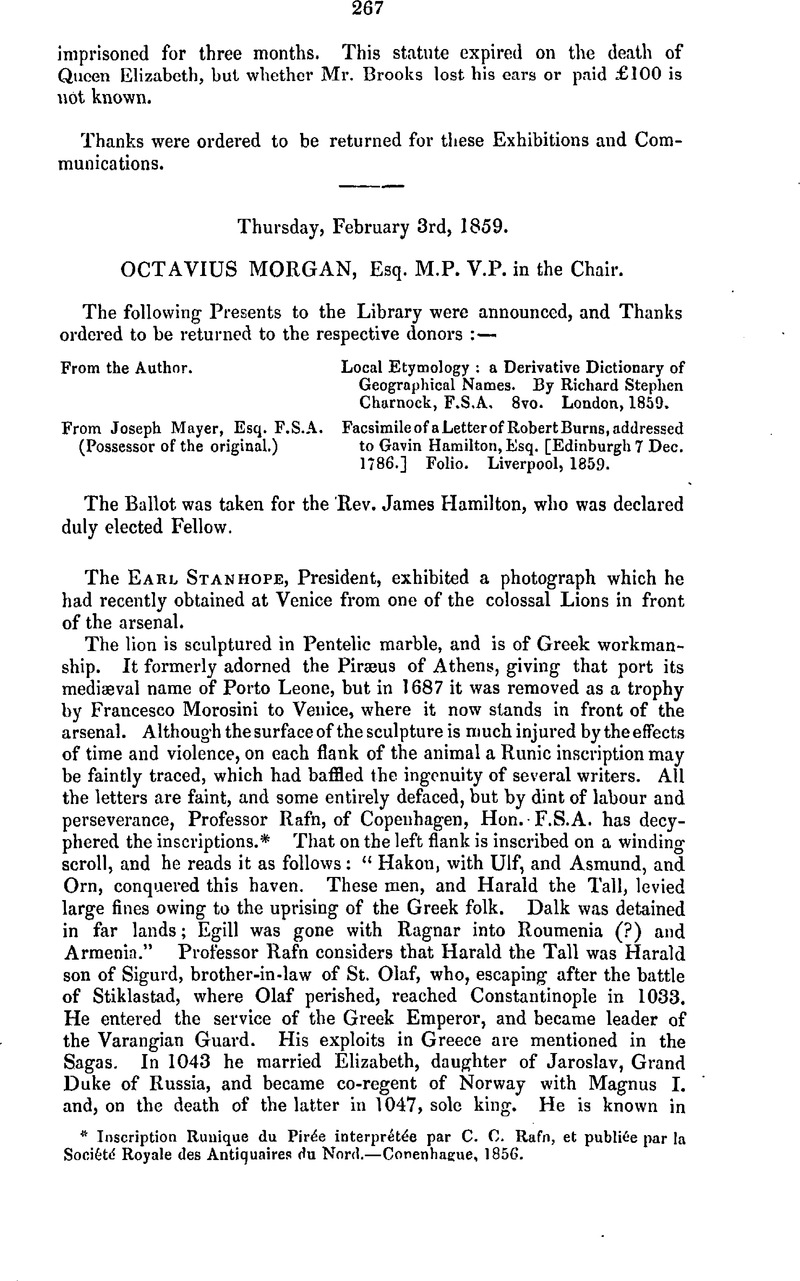No CrossRef data available.
Article contents
Thursday, February 3rd, 1859
Published online by Cambridge University Press: 10 May 2010
Abstract

- Type
- Proceedings
- Information
- Copyright
- Copyright © The Society of Antiquaries of London 1859
References
page 267 note * Inscription Ruuique du Pirée interprétéd par C. C. Rafn, et publiée par la Socifetd Royale des Antiquaires du Nnrd.—Conenhague, 1856.
page 269 note * Lib. iii. cap. xii. § 3.
page 269 note † It very closely resembles the one engraved in the Archæologia, Vol. XXXVIII, p. 85.
page 270 note * An engraving of one of the coins of Ilium, representing the Palladium, may he found in Smith's Dictionary of Greek and Roman Geography, voce Ilium. Eckhel, in describing these coins (vol ii. p. 484), owing to his not being acquainted with the early form of distaff, calls the object held in the left hand of Minerva a torch, and finds fault with the opinion which had been expressed by Abbé Fontenu, that it represented a distaff.
page 273 note * This was shown by the production.of the probate acts, dated respectively the 28th of July, 1830, and 4th of October, 1837, of two wills which had been proved in that peculiar.
page 274 note * It is possible, as the legend is contracted, and the last syllable is cub, that this may have been read Cob, and so the seal came to be referred to the college of Cobham.




